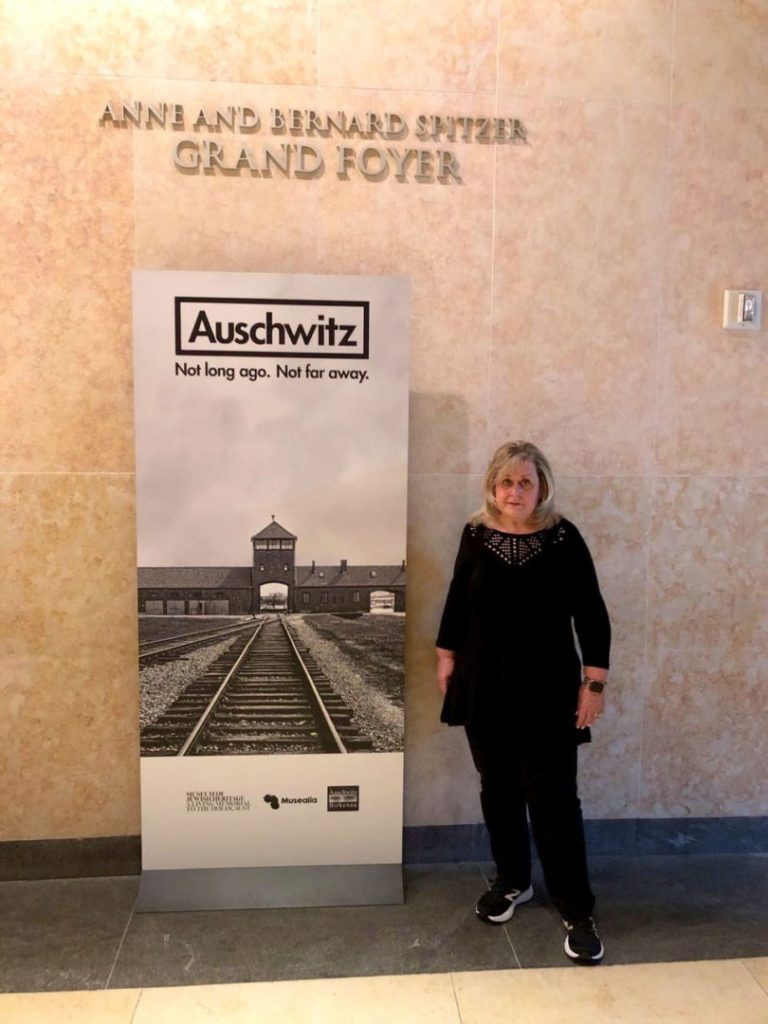Everything happens for a reason.
I find myself saying that a lot more often these days. This time it was about educating students in another country about the Holocaust using my uncle’s story of survival.
A few years ago I wrote Hidden Gold, a memoir of my family’s Holocaust history, which was published by Second Story Press and went on to win an honour book award in the Ontario Library Association’s Forest of Reading in 2017.
Some Ontario schools began teaching the Holocaust through my Uncle David Gold’s memories of being hidden for over two years with five others, in a concealed, cramped enclosure of a barn.
Kathy Kulfan, a teacher from New Jersey, whom I met through an online support group, read the book and chose to use it to teach her English class at West Morris Central High School in Morris County, N.J. about the Holocaust.
Over the last couple of years, Kulfan taught the Holocaust to her class by reading Hidden Gold out loud as a group. With the help of the teacher’s study guide, which accompanies the book, they got to know every character and discussed every scene. They debated moral dilemmas, talked about love versus hate, and tried to fathom how Hitler’s plan to exterminate an entire race of human beings was even possible. They were so involved, each student wrote me a letter with comments and questions, which lead to me doing a live discussion with one of her classes through Skype.
Fast forward to Oct. 19, 2019. My husband Marshall and I drove to New York City where we met Kulfan, her students and assistants at the Museum of Jewish Heritage. Together, under the leadership of our experienced guide Linda, we explored the exhibit Auschwitz. Not long ago. Not far away.
I didn’t expect the emotion that rose within me when I met those students, most of whom were special needs kids. They seemed as happy and emotional to meet me in person, as I was to meet them. I got hugged, had selfies and there was a real love-fest right there in the lobby of the museum in front of the large Auschwitz poster. Their appreciation and love of history and knowledge was infectious, not to mention inspiring.

We followed our guide through the exhibit, which contained more than 700 original artifacts from Auschwitz. These kids were not shy, they asked questions and answered everything the guide posed to them. They seemed to know every date and timeline, even Linda was extremely impressed.
It’s the human element that really hit home. When they saw the shoe belonging to a small child with the sock still stuffed into it, they tried to put a story to that shoe. Who was that child? Why was he/she in such a hurry? Was the shoe forcefully removed? Did that child go into the gas chamber?
There were other artifacts that were equally disturbing and thought-provoking. The exhibit includes an original German-made Model 2 freight wagon, which stands outside in front of the museum. It was used to transport Jews, Roma, disabled people, homosexuals, Polish political prisoners and others to the camp. We discussed how it had no windows, how cramped and acrid the smell must have been. How they must have been so relieved to finally arrive at their destination and have the door open so they could breathe fresh air, only to have their belongings stolen and be part of a selection line for a “shower.” That led us to the exhibit and discussion of the way in which the gas chambers were highly efficient with the column where the Zyklon B gas would enter to kill a maximum amount of people in a minimum amount of time.
I looked at their faces. Complete silence, as they absorbed what Linda was saying.
I couldn’t help wonder if they thought, even for a moment, had they lived in that time, they could have been part of that selection.
We went on to see and hear movies, propaganda posters, barbed wire and columns from the camp, wooden bunkers, letters, survivor testimonies, hundreds of photographs, original paintings and drawings, maps, a desk belonging to Rudolf Höss, the first and the longest serving Auschwitz commandant. The list is long and the imagination and discussions, endless.
Watching these kids learn and experience history, and the history of my ancestors, was an emotional experience I will never forget. Kathy later told me, in their hour-and-a-half bus ride back to school, they didn’t stop talking about their experience. It meant as much to them as it did to Marshall and me.
What began with my uncle’s desire to leave his story of survival for his grandchildren, ended with thousands of kids learning about this horrific period in history. Somehow, it gives their suffering a purpose, and the sayings, “never again” and “never forget,” may actually have a chance.






